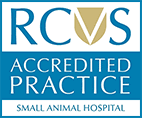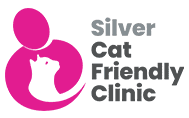We know regular veterinary visits benefit our cats – but taking them for an appointment can pose a challenge if not done correctly. Cats by nature are independent, territorial and need to feel in control. So – all these things can make trips to the vets eventful for both you and your cat.
Preparation for your cat’s vet visit
A trip to the vets takes cats completely out of their comfort zone as they experience confinement in a carrier followed by unfamiliar motion, sights, smells and sounds. All these will increase a cat’s anxiety levels and place it into a high state of alert.
Fortunately, you can do a few things to make the experience less challenging for you, your cat, and our veterinary team.
From an early age, you should get your cat accustomed to being handled. One of the most common things your vet or nurse will do during any visit is perform a routine physical exam of your pet. The best approach is gentle, little and often handling. Always stop if your cat shows any signs of unease. The more your cat is used to this, the more likely it is that being handled by our veterinary and nursing teams will be well tolerated.
Travelling to the vet means getting your cat familiar with carrier use. When choosing a carrier, it should be sturdy, easy to clean, secure and should be easily accessible. Open top carriers can be easier for this reason.
In the first instance, place the carrier in a room where your cat is comfortable, put some familiar bedding in it and allow your cat to get used to it being there. You may wish to use a pheromone spray for cats on the bedding to reduce any anxiety or place some treats within the carrier. It is also advisable to place a light covering over carriers to increase the feeling of security.
On the day of the appointment, please do not feed your cat a large meal before leaving for the vet, as the travel could induce nausea, causing your cat to be sick in their carrier. It’s fine to offer a few treats as positive reinforcement when preparing them for their journey (as long as you haven’t been asked to withhold food before a procedure). We may sometimes use treats at our practice to reward your cat and improve their experience with us.
At the veterinary practice
When your cat is ready to go to the vet, please avoid rushing. Pick up your carrier in a secure manner, held close to you to reduce excess motion. The handle on a carrier should only be used to lift the carrier when empty! Cats usually need time to get used to the veterinary clinic and to calm down – this should not be a problem and our team will take the time needed.
At the veterinary practice, keep the cat carrier covered to avoid visual contact with others. We try to keep our waiting room as tranquil as possible, but the presence of other pets and unfamiliar scents can increase anxiety in cats. Ask the clinic staff to place your cat in a quiet area or room. Wherever possible, keep your cat carrier placed off the ground as cats feel safer when in an elevated position as they can then scout their surroundings more easily.
Once in the consulting room, ask our team if it is ok to open the carrier and let the cat exit the carrier on its own to explore the examination area. Use strokes or treats to help them relax. Our team will always take a few minutes to chat with you before the physical check-up in a routine consult. This gives your cat a chance to acquaint themself with the surroundings and get used to the new sights, sounds and smells of the clinic before the vet or nurses begins an examination.
Bringing your cat back home
The exit from the practice should be done with as much care as your arrival. A rushed trip back home with a lot of unnecessary movement can be equally traumatising to your cat. However, you can give your cat extra cuddles and treats when you arrive home for being a brave kitty!
We look forward to seeing you and your cat soon
Stress, anxiety and worry have a major impact on cat welfare. This is why we are proud of our International Society of Feline Medicine (ISFM) Silver Cat Friendly Clinic status. There are many ways we help to minimise stress as much as possible for our feline friends when they visit the practice. Click here to find out more and visit www.catfriendlyclinic.org








